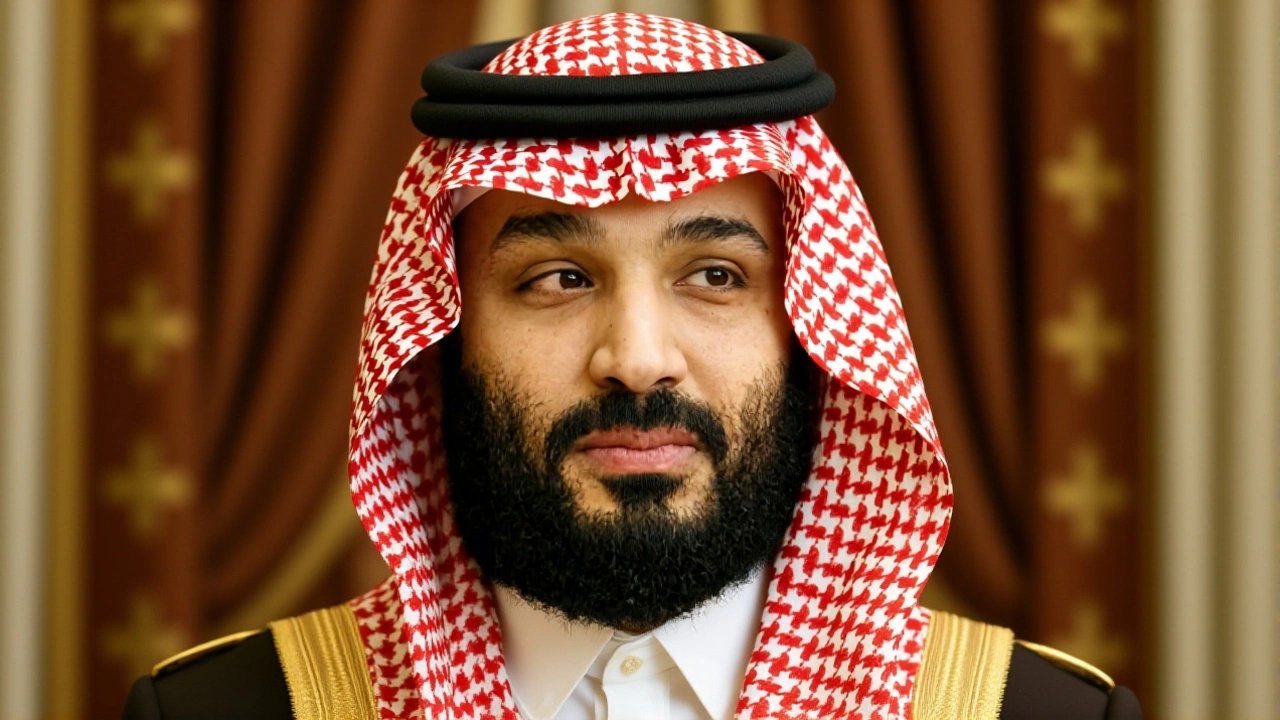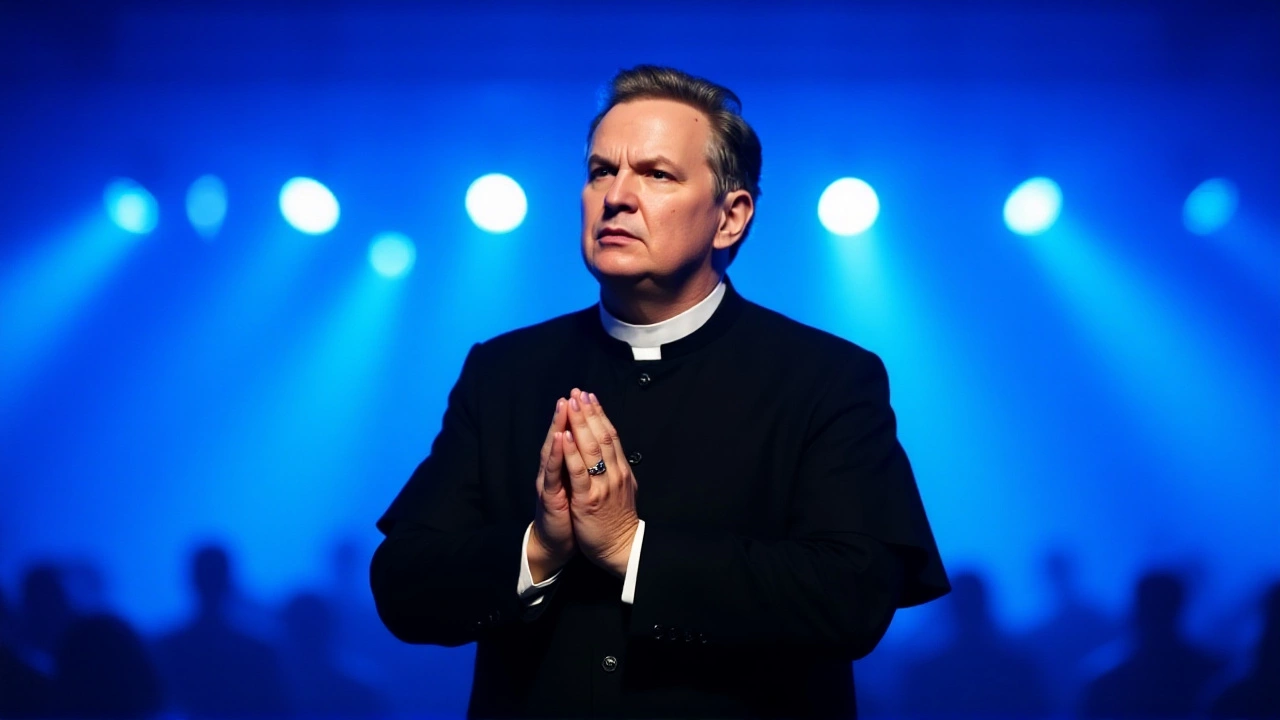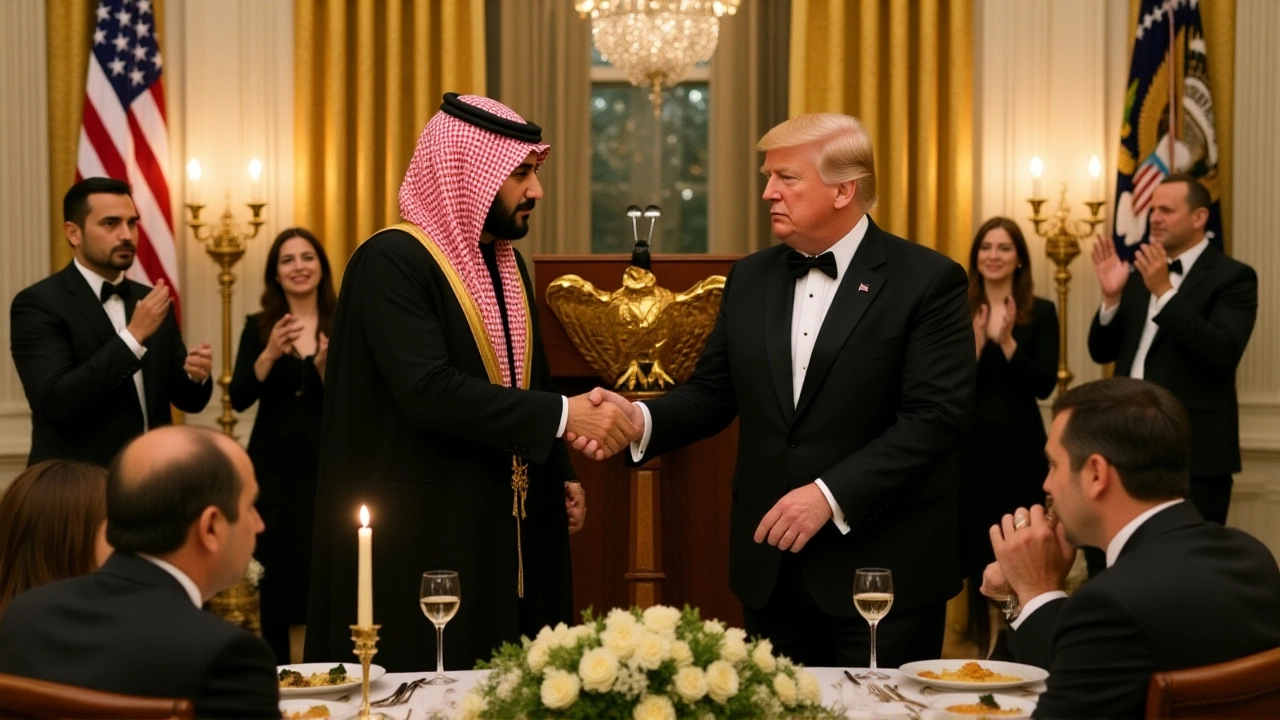On Tuesday evening, November 18, 2025, Donald J. Trump and Melania Trump welcomed Mohammed bin Salman Al Saud, Crown Prince and Prime Minister of the Kingdom of Saudi Arabia, to a lavish black-tie dinner in the East Room of the White House in Washington, D.C.. The event, which began at 8:00 PM EST and ended just after 11:30 PM, capped a 13-hour official visit that included high-stakes talks on defense, artificial intelligence, and regional diplomacy — all unfolding against the backdrop of a rapidly shifting global order.
High-Stakes Diplomacy Over Crab and Lamb
The dinner, served on the ornate Lincoln state china with 24-karat gold trim, featured chilled Chesapeake Bay crab cocktail, herb-crusted Colorado lamb, and chocolate soufflé — a menu chosen not just for elegance, but symbolism. The Kingdom of Saudi Arabia has long been America’s largest foreign military buyer, and this meal was clearly designed to signal warmth amid hard-nosed negotiations. Attendees included Elon Musk, CEO of Tesla, Inc. and SpaceX; Tim Cook, CEO of Apple Inc.; and Cristiano Ronaldo, the global football icon whose presence underscored Saudi Arabia’s soft power ambitions.Defense, AI, and Nuclear Energy: The Big Three
Earlier that day, Donald J. Trump and Mohammed bin Salman Al Saud met in the Oval Office to finalize three pillars of their strategic partnership. First: a potential $250 billion arms deal, the largest in U.S. history, targeting advanced fighter jets, missile defense systems, and cyber warfare tools. Second: the launch of the U.S.-Saudi AI Consortium, a joint initiative to develop military and civilian AI applications, with initial funding of $1.5 billion. Third: civilian nuclear energy cooperation under IAEA safeguards, allowing Saudi Arabia to pursue enrichment technology — a sensitive issue that has drawn scrutiny from Israel and Iran alike."Today’s discussions have unlocked unprecedented opportunities for American workers and Saudi innovators," Donald J. Trump declared at the farewell ceremony on the South Lawn. "We’re finalizing deals that will create 75,000 new jobs across 27 states." The Congressional Budget Office estimates those deals could generate $12.7 billion in annual U.S. export revenue by 2027. Factories are already being planned in Alabama, Texas, and Ohio — areas that voted heavily for Trump in 2024.
Business Titans in the Room
The presence of Elon Musk and Tim Cook wasn’t ceremonial. Tesla, Inc. and SpaceX have joint ventures with Saudi Arabia’s Public Investment Fund worth $4.2 billion as of Q3 2025. Apple Inc. has a $1.8 billion partnership with Saudi Aramco to secure semiconductor supply chains — a critical move as global chip shortages linger."This isn’t just about weapons," said a senior State Department official who spoke on condition of anonymity. "It’s about reshaping the tech ecosystem. Saudi Arabia wants to be a hub, not just a buyer. And the U.S. wants to lock them in before China or Russia can." The Kingdom of Saudi Arabia has already invested over $100 billion in its Vision 2030 infrastructure push — and American tech is now central to that plan.

The Israel Factor: A Quiet Revolution
Perhaps the most consequential outcome of the visit was the acceleration of Saudi-Israeli normalization. Though not formally announced, both sides agreed to expand the Abraham Accords to include direct trade, joint cybersecurity projects, and intelligence sharing. The next step? A high-level meeting in Geneva on December 3, 2025, between Marco Rubio, U.S. Secretary of State, and Prince Faisal bin Farhan Al Saud, Saudi Foreign Minister. A formal signing is targeted for February 14, 2026.This would be a seismic shift. For decades, Saudi Arabia refused to normalize ties with Israel unless a Palestinian state was established. Now, with regional threats from Iran and Houthi rebels mounting, Riyadh is prioritizing security over symbolism. "They’re not abandoning Palestine," noted a former U.S. Middle East envoy. "They’re just deciding they can’t wait for it anymore."
What Comes Next?
The U.S.-Saudi summit may have ended, but the ripple effects are just beginning. By Q1 2026, the U.S.-Saudi AI Consortium expects to announce its first three joint defense projects. The $250 billion arms package will require congressional approval — a hurdle, but one made easier by the fact that 18 senators from defense-heavy states are already publicly endorsing it.Meanwhile, Cristiano Ronaldo’s presence drew global headlines — and not just because he’s the world’s most famous athlete. His contract with Al-Nassr FC is worth $200 million annually, and his endorsement deals are now being leveraged by Saudi officials to attract global tourism and investment. "He’s the ultimate brand ambassador," said a marketing executive who advised the Saudi government. "He doesn’t need to say anything. His presence says it all."

Historical Context: Three Meetings, One Strategy
This was the third face-to-face meeting between Donald J. Trump and Mohammed bin Salman Al Saud since January 2025. The first was at the World Economic Forum in Davos on January 22, 2025, where they reportedly discussed AI and energy. The second occurred in June at Neom, Saudi Arabia, where Trump toured the futuristic city project and praised its scale. Each meeting built momentum — and this one delivered tangible outcomes.What’s striking is how quickly the relationship has matured. In 2018, Mohammed bin Salman Al Saud was pariah after the Khashoggi killing. Today, he’s dining with the President of the United States, shaking hands with the CEOs of Apple and Tesla, and negotiating peace with Israel. The world has changed. And so has the balance of power.
Frequently Asked Questions
How will the $250 billion arms deal affect U.S. manufacturing jobs?
The deal is projected to create 75,000 jobs across 27 states, with new defense production facilities planned in Alabama, Texas, and Ohio — areas that were pivotal in Trump’s 2024 re-election. Factories will produce advanced missile systems, radar networks, and cyber defense tech, with contracts going to companies like Lockheed Martin and Raytheon. The Congressional Budget Office estimates this will boost U.S. manufacturing output by $12.7 billion annually by 2027.
Why was Cristiano Ronaldo at the dinner?
Ronaldo’s presence was a strategic move by Saudi Arabia to amplify global visibility. As the world’s most followed athlete and a $200 million-per-year player for Al-Nassr FC, his attendance signals Saudi Arabia’s ambition to become a global cultural and economic hub. It’s part of a broader soft power campaign to attract tourism, investment, and talent — not just military contracts.
What’s the significance of the U.S.-Saudi AI Consortium?
The consortium, launched during the summit, is the first formal U.S.-Saudi partnership focused on military and civilian AI development. With $1.5 billion in initial funding, it will prioritize autonomous drones, battlefield analytics, and infrastructure automation. It’s a direct response to China’s growing AI dominance and aims to position Saudi Arabia as a regional tech leader — while ensuring U.S. companies retain control over sensitive algorithms.
Could this lead to Saudi Arabia getting nuclear weapons?
No — at least not officially. The agreement allows for civilian nuclear energy under IAEA safeguards, including uranium enrichment for power generation. But U.S. officials insist the technology will be monitored and restricted to non-weapons use. Still, experts warn that if Iran develops a bomb, Saudi Arabia may feel compelled to pursue its own — making this deal a high-stakes gamble in regional stability.
What happens if Congress blocks the arms deal?
Even if Congress delays approval, the deal’s framework is already binding through executive agreements. The Pentagon has begun pre-production planning, and Saudi Arabia has already paid $2 billion in non-refundable deposits. Congressional opposition would likely delay, not kill, the deal — especially since 18 senators from defense states are publicly backing it. A full veto would be politically explosive and economically damaging.
When will Saudi Arabia and Israel officially normalize relations?
The next critical step is a meeting in Geneva on December 3, 2025, between U.S. Secretary of State Marco Rubio and Saudi Foreign Minister Prince Faisal bin Farhan Al Saud. A formal signing of the expanded Abraham Accords is targeted for February 14, 2026 — a date chosen for its symbolic value as Valentine’s Day, signaling a "new love" between the two nations.




